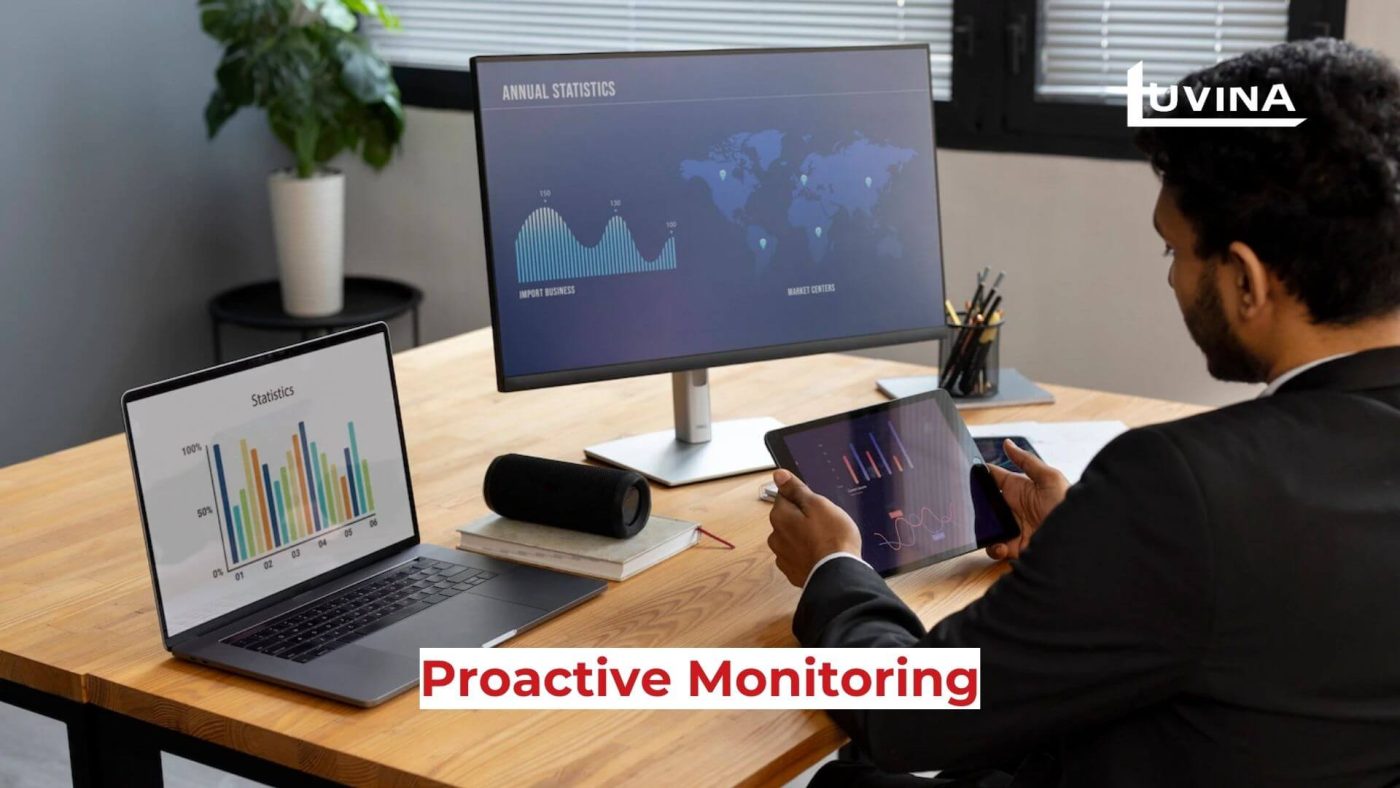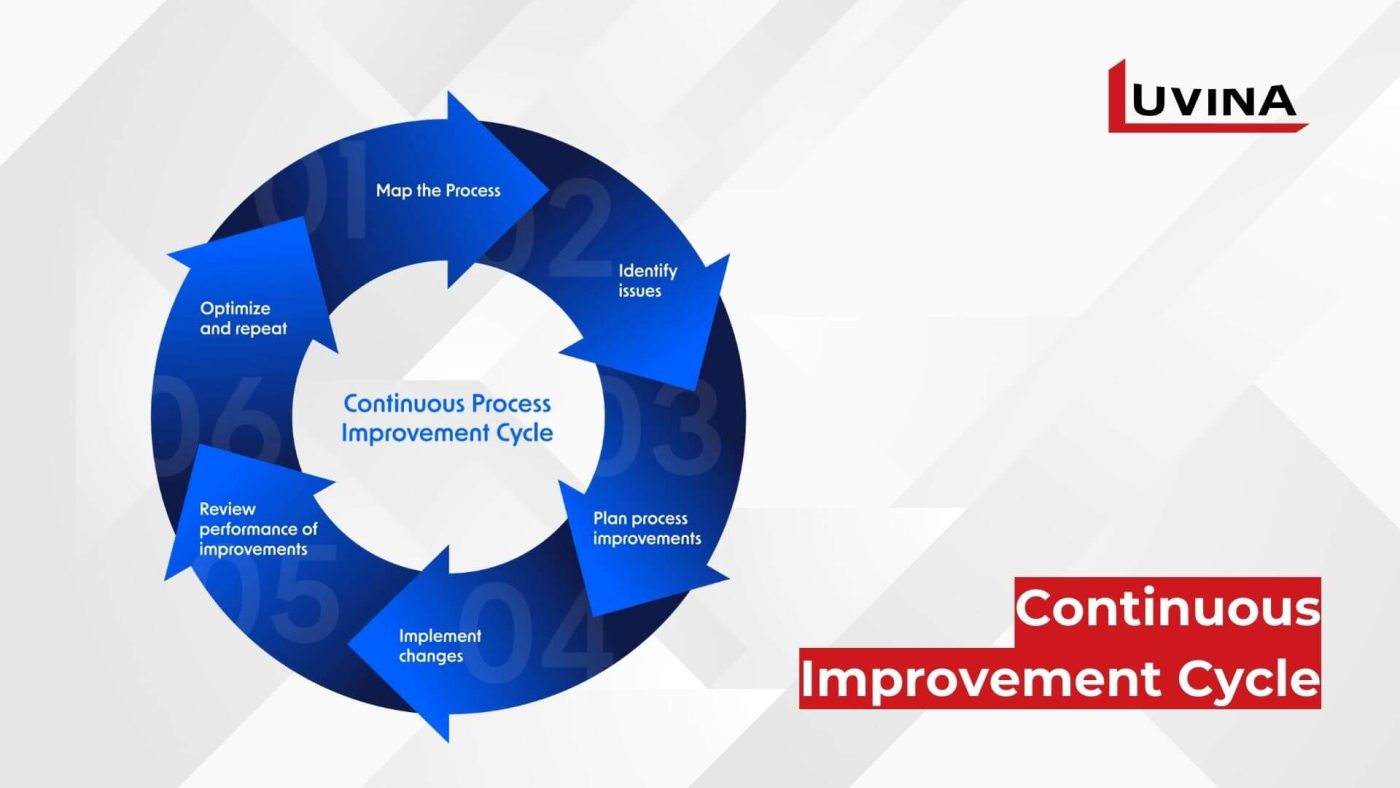In today’s interconnected digital sphere, robust IT security operations serve as the frontline defense, safeguarding systems and sensitive data from a myriad of cyber threats. The efficiency and effectiveness of these operations are pivotal in maintaining the integrity of organizational infrastructures. This blog aims to delve into the realm of enhancing and optimizing IT security operations. From refining strategies to leveraging cutting-edge technologies, this guide navigates the pathways to fortify and elevate security frameworks, ensuring resilience against evolving cyber risks.

Understanding IT Security Operations
1. Defining IT Security Operations
IT Security Operations refers to the systematic management of security measures within an organization. It involves strategies, processes, and technologies designed to protect digital assets, networks, and systems from potential threats. This operational facet plays a crucial role in mitigating security incidents, swiftly responding to breaches, and maintaining a robust security posture.
2. Significance in Managing Security Incidents
IT security operations are the cornerstone of managing security incidents effectively. These operations encompass incident detection, response, and resolution, aiming to minimize the impact of security breaches and swiftly restore normalcy. By actively monitoring and analyzing security events, operations teams can promptly identify and address potential threats, thus averting or mitigating potential damages to the organization’s systems and data.
3. Components of Security Operations
IT security operations comprise various components, including but not limited to:
IT Security Monitoring and Detection: Continuous monitoring of networks and systems to identify potential security threats or anomalies.
Incident Response: Defined processes and protocols for responding to security incidents promptly and effectively.
Vulnerability Management: Procedures for identifying, assessing, and mitigating vulnerabilities across systems and applications.
Threat Intelligence: Gathering and analyzing information to proactively understand emerging threats and potential risks.
Compliance Management: Ensuring adherence to regulatory standards and industry best practices to maintain compliance.
Understanding these components and their interplay is critical in establishing a resilient and effective IT security operations framework within organizations.
Importance of Efficient IT Security Operations
Absolutely! Here’s a rundown on the importance of efficient IT Security Operations:
Critical Role in Risk Mitigation
Efficient IT security operations play a pivotal role in mitigating risks associated with cyber threats. By actively monitoring systems and networks, promptly detecting anomalies or potential breaches, and responding swiftly, organizations can significantly reduce the likelihood and impact of security incidents. This proactive approach aids in identifying vulnerabilities before they can be exploited and in minimizing the window of exposure to threats.
>> Also read: A Comprehensive Guide to IT Security Risk Management
Enhancing Overall Security Posture
Streamlined and effective security operations contribute directly to bolstering an organization’s overall security posture. Robust operations not only address immediate threats but also establish a proactive defense mechanism that continuously evolves to counter emerging threats. When security operations are well-coordinated, leveraging the right tools and methodologies, they create a resilient security framework that safeguards critical assets, data, and systems against a wide array of threats.
Efficient IT security operations are indispensable in today’s dynamic threat landscape, providing the foundation for a robust security infrastructure that can withstand evolving cyber threats.
Strategies for Effective IT Security Operations
Proactive Monitoring
Establishing a proactive monitoring system allows for real-time surveillance of network and system activities. This involves deploying intrusion detection systems, continuous security assessments, and leveraging threat intelligence to detect potential threats early. With prompt identification, the security team can swiftly respond, minimizing the impact of security incidents.

Incident Response Protocols
Instituting robust incident response protocols ensures a well-defined set of actions to be taken in case of security breaches. This involves creating incident response plans, conducting regular drills, and having a dedicated team ready to handle security incidents efficiently. A rapid and well-coordinated response significantly mitigates the impact of breaches and aids in recovery.
Automation and Optimization
Embracing automation tools and optimizing security tasks and processes streamline operations. Automation helps in handling routine tasks, enabling security teams to focus on critical issues. Moreover, optimizing existing processes by employing the latest technologies and methodologies can enhance efficiency and effectiveness in managing security operations.
These strategies form the backbone of effective IT security operations, ensuring a proactive stance against threats and a more resilient security posture.
Technologies in IT Security Operations
In modern IT security operations, various technologies and tools are instrumental in fortifying defenses and managing threats:
AI and Machine Learning
AI and machine learning technologies are pivotal in identifying patterns and anomalies within vast datasets. They aid in predicting potential threats based on historical data, enabling proactive threat detection. These technologies continuously learn and adapt to new threats, assisting in refining security measures and responses.
Advanced Analytics
Advanced analytics tools offer insights into network activities, user behaviors, and potential vulnerabilities. By analyzing massive amounts of data, these tools help in identifying potential threats and vulnerabilities, facilitating quick decision-making for security teams.
SIEM (Security Information and Event Management)
SIEM solutions collect and analyze security event data from various sources across an organization’s IT infrastructure. They provide a comprehensive view of security events, aiding in threat detection, incident response, and compliance management.
Endpoint Detection and Response (EDR)
EDR tools monitor and respond to suspicious activities on endpoints like laptops, desktops, and mobile devices. They offer real-time visibility into endpoint activities, enabling quick identification and response to potential threats.
These technologies, combined with the expertise of security professionals, contribute significantly to the effectiveness and efficiency of modern IT security operations.
Incident Detection and Response
In the realm of incident detection and response within IT security operations, several strategies and practices play a crucial role:
Real-time Monitoring
Continuous monitoring of networks, systems, and applications in real-time aids in the prompt identification of suspicious activities or security incidents. Automated systems and trained analysts keep a vigilant eye on potential threats, minimizing the dwell time of an incident.
Threat Intelligence
Leveraging threat intelligence feeds and databases helps in identifying known patterns of attack or indicators of compromise. This proactive approach assists in identifying and responding to potential incidents more effectively.
Incident Triage and Response Plan
Organizations must have a well-defined incident response plan outlining clear steps to follow when an incident occurs. This plan includes roles and responsibilities, communication protocols, containment measures, eradication steps, and recovery procedures to minimize the impact of security incidents.
Forensic Analysis
After an incident, conducting a thorough forensic analysis helps in understanding the nature and extent of the attack. This analysis assists in identifying the root cause, assessing the impact, and implementing measures to prevent similar incidents in the future.
Regular Training and Drills
Continuous training and simulation exercises for incident response teams ensure they remain updated with evolving threats and are adept at implementing the incident response plan effectively when a real incident occurs.
By integrating these strategies and best practices into incident detection and response protocols, organizations can bolster their ability to detect and mitigate security incidents efficiently, thereby reducing potential damage and ensuring a swift recovery process.
Continuous Improvement and Adaptation
Continuous improvement in security operations is paramount in the ever-evolving landscape of cybersecurity. It ensures that security measures remain effective and relevant in the face of emerging threats and changing attack methodologies.

Adapting to Emerging Threats
Cyber threats constantly evolve, making it crucial for security operations to adapt swiftly. Regular analysis of new threats, vulnerabilities, and attack patterns enables security teams to update their defense mechanisms and response strategies accordingly.
Regular Assessments and Updates
Conducting regular assessments of security measures, including technologies, policies, and procedures, helps identify areas for improvement. Implementing updates, patches, and security enhancements based on these assessments strengthens the security posture.
Learning from Incidents
Incidents, even if well handled, provide valuable lessons. Conducting post-incident reviews helps identify weaknesses and gaps in security operations. Learning from these incidents enhances incident response and aids in fortifying defenses against similar future threats.
Collaboration and Knowledge Sharing
Collaboration with peers, industry experts, and information-sharing platforms fosters a collective defense approach. Sharing insights, best practices, and threat intelligence strengthens security operations by leveraging collective knowledge and experiences.
Agility and Flexibility
Security operations should be agile and adaptable. As technology landscapes change, and new devices and platforms emerge, security measures must evolve to secure these new environments effectively.
By embracing continuous improvement and adapting to the dynamic threat landscape, organizations can maintain resilient and robust security operations capable of defending against a wide array of cyber threats.
Collaboration and Communication
Effective collaboration and communication are linchpins in the success of security operations teams. They facilitate seamless coordination and response in addressing security incidents and ensuring the overall robustness of the security posture.
Team Coordination
Collaboration allows diverse members of security teams, such as analysts, incident responders, and administrators, to work together harmoniously. This unity ensures a collective and coordinated approach to threat detection, incident response, and resolution.
Knowledge Sharing
Encouraging open communication fosters knowledge sharing among team members. It enables the dissemination of insights, emerging threat information, and best practices. Such sharing enhances the team’s collective intelligence and response capabilities.
Clear Communication Protocols
Establishing clear communication protocols ensures swift and effective information flow during security incidents. Clearly defined roles, responsibilities, and escalation procedures help streamline responses, reducing confusion, and enabling quick decision-making.
Cross-Functional Collaboration
Collaboration extends beyond the security team. Engaging with other departments such as IT, legal, and risk management facilitates a holistic approach to security. This cross-functional collaboration ensures alignment with broader organizational objectives and compliance requirements.
Adaptability and Response Agility
Clear communication channels enable teams to adapt swiftly to evolving threats. Rapidly disseminating information about emerging threats or vulnerabilities allows for proactive measures to mitigate risks promptly.
Cultivating a Culture of Communication
Fostering an environment where communication is encouraged, valued, and seen as an essential element of security operations promotes a culture of collective responsibility and responsiveness.
Effective collaboration and communication are instrumental in creating a cohesive security operations framework. They empower teams to effectively mitigate risks, respond to incidents, and continuously improve security practices.
Conclusion
Ensuring optimized IT security operations remains a cornerstone in safeguarding systems against evolving threats. The pivotal role of streamlined security operations in threat mitigation, incident response, and continual adaptation cannot be overstated. Businesses must prioritize and fine-tune their security operations, fostering a proactive security stance. The ever-evolving landscape of threats necessitates vigilance, adaptability, and a commitment to ongoing improvement in security practices. Prioritizing these aspects ensures a robust security posture that aligns with the dynamic digital landscape, offering resilience against emerging threats.










Read More From Us?
Sign up for our newsletter
Read More From Us?
Sign up for our newsletter